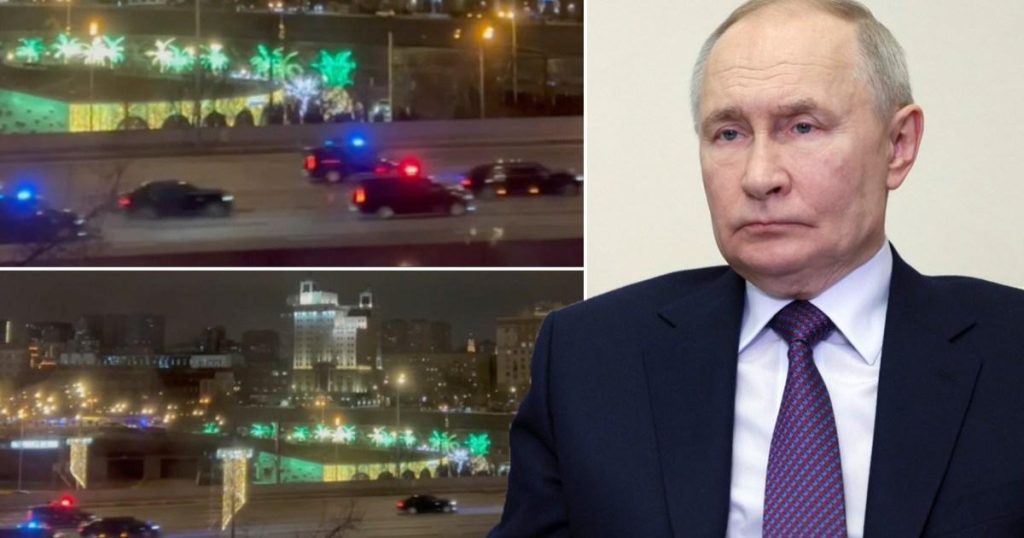Putin’s Kremlin Dash Amidst War and Negotiation Speculation
A late-night dash by Russian President Vladimir Putin to the Kremlin has fueled speculation about potential negotiations with former US President Donald Trump to end the ongoing war in Ukraine. Video footage capturing Putin’s motorcade, flanked by police vehicles with flashing lights, speeding towards the seat of Russian power was widely circulated on social media, including various Russian Telegram channels. This incident coincided with Trump’s public pronouncements regarding the war, adding further intrigue to the situation. The timing of Putin’s hurried visit to the Kremlin, coupled with Trump’s statements, has sparked intense discussion and analysis about the possibility of a negotiated settlement to the conflict.
Trump’s Threats and the Kremlin’s Response
Former US President Donald Trump’s recent statements on the Ukraine war have further complicated the already intricate geopolitical landscape. Trump threatened to impose significant tariffs and sanctions on Russia if Putin fails to bring an end to the conflict. He asserted that he would have "no other choice" but to implement these measures if a deal isn’t reached "soon." This strong stance from Trump, a figure known for his unconventional approach to foreign policy, has introduced a new element of uncertainty into the equation. The Kremlin’s response to Trump’s threats has been measured, stating their continued readiness for "equal dialogue" and a "mutually respectful dialogue." However, they also indicated that they see nothing novel in the threats of sanctions, suggesting a degree of skepticism towards Trump’s pronouncements.
Putin’s Stance and the Challenges of Negotiation
While Putin has expressed his willingness to negotiate, his conditions present significant obstacles to reaching a peaceful resolution. He demands territorial concessions from Ukraine, a condition that Ukrainian President Volodymyr Zelenskyy has consistently rejected under the Biden administration. Russia’s occupation of approximately 20% of Ukraine’s territory further complicates the matter. Putin’s likely red lines also include preventing Ukraine from joining NATO and the lifting of existing sanctions, adding further layers of complexity to the negotiation process. These conditions represent substantial sticking points, making a mutually agreeable solution a daunting prospect.
Zelenskyy’s Position and the Need for Peacekeepers
Ukrainian President Volodymyr Zelenskyy, while previously steadfast in his refusal to cede any territory to Russia, has recently indicated a potential shift in his stance. He acknowledged the possibility of temporarily ceding some occupied land, suggesting a degree of flexibility in his approach to negotiations. However, he emphasized the critical need for a substantial peacekeeping force, including US troops, to ensure the effectiveness of any peace agreement. Zelenskyy estimates that at least 200,000 peacekeepers would be required to deter further Russian aggression, stressing the importance of US involvement in any such force. He believes that without US participation, a lasting peace would be unattainable. This highlights the continued importance of US support for Ukraine, even in the context of potential negotiations.
The Complexities of a Potential Deal and its Implications
The potential for a deal between Putin and Trump, should it materialize, presents a multifaceted scenario with numerous implications. The specific terms of any agreement would be critical, particularly regarding territorial concessions, security guarantees, and the future relationship between Ukraine and Russia. The international community’s role in enforcing and guaranteeing any agreement would also be crucial. Furthermore, the domestic political ramifications for both Putin and Trump, particularly in the context of upcoming elections, add another layer of complexity. The potential for a deal to reshape the geopolitical landscape is substantial, with potential consequences for regional stability and the balance of power.
The Uncertain Future of the Ukraine War
The convergence of Putin’s Kremlin dash, Trump’s public pronouncements, and the ongoing complexities of the war in Ukraine creates a highly uncertain and volatile situation. The possibility of a negotiated settlement, while present, faces significant hurdles. The conflicting demands of the parties involved, the deep-seated mistrust between them, and the ever-present risk of escalating conflict make predicting the future trajectory of the war exceptionally challenging. The international community continues to play a critical role in mediating the conflict and seeking a path towards peace, but the ultimate outcome remains shrouded in uncertainty.




